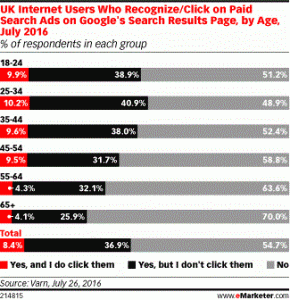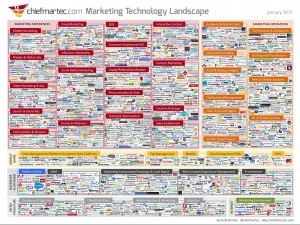AI Helps Marketers In Two Ways
by Cory Treffiletti, Featured Contributor, March 8, 2017
I participated in a roundtable conversation on AI last week, which helped me broaden my view into how the technology can be used in a marketing environment.
I realized there are two primary ways the marketing enterprise can leverage AI: back-end and front-end-oriented.
Whenever I thought about AI in the past, I focused on the back end and how marketers can use these tools to automate intelligence via reporting and basic analytics.
In the back end, it’s about creating efficiencies. Automating optimization is the obvious initial place to start, but there’s certainly more to it. On the back end, you can begin to use AI for modeling audiences, developing insights that drive creative, and more. It becomes a tool to automate basic backroom functions that are typically managed by entry-level employees or even by your agencies. Why pay an outsourced team to manage these efforts, when a machine can be used in its place?
The agency model is probably the one most threatened by AI because it reduces the time requirements, which leads to FTE allocations and direct billing opportunities. On the flip side, it also makes it possible for agencies to offer these services in a scalable manner while not having to “throw bodies” at the problem, thereby creating a higher margin revenue opportunity for them if they can demonstrate strong ROI to the client for these costs.
Of course many marketers are already experimenting with AI on the front end as well. These are the ones I tend to overlook because of my own personal bias. These typically manifest in two areas: personalization and bots.
Personalization is not a new concept, but more recent tools enable marketers to employ data to personalize a Web site, emails and ads. The personalization of these platforms can be exponentially more effective if machine learning is used to identify the audience and deliver the right message based on where they are in their customer journey at that moment. As these tools improve both in terms of accuracy and speed, so does marketing performance.
Bots in social media, chat and more are also becoming commonplace. Bots and bot-like interfaces range from the basic social media robots that enable brand interaction without a human being involved to the likes of Alexa, Siri and Google Home as full-on digital assistants. Some of these tools are far more advanced than others, but they all exist to reduce friction while creating the semblance of personalized interaction at scale.
Data is still the most important element here because bots, whether via text or voice, require significant data in to create and manage their interface for human interaction through speech recognition and voice understanding . They also require data out to be able to deliver a response that is both useful and accurate to the person engaging with it.
Many of these systems can be gamed, as proven by some recent, high-profile missteps. Many can be considered rudimentary. When executed well, they can create a very positive brand interaction and help instill a sense of loyalty and confidence in a brand.
I commonly use all 3 and Alexa is the one who works best in my opinion, but I certainly don’t count out Apple or Google in the long run. In a social media environment I find all the branded bots to be more fad than effective tool. I think they tend to create some customer goodwill and interest in the short term, but in the long term I don’t know how effective they can be without large investment and a commitment to bring them to further value in the customer journey.
AI is really in the early stages, especially for marketers. The use cases are simple, but the promise is high. It’s not dissimilar to the kinds of conversations that were going on in 1995 and 1996 around digital media. There is a lot of promise when one thinks about reducing friction between brands and consumers and creating efficiencies in selling or servicing products, but most of the world is simply not yet ready.
That being said, I doubt anyone disagrees with that promise and looking at it in terms of front-end interaction vs. back-end process management is, I hope, a way to make this whole path more digestible.
MediaPost.com: Search Marketing Daily
(62)
Report Post





